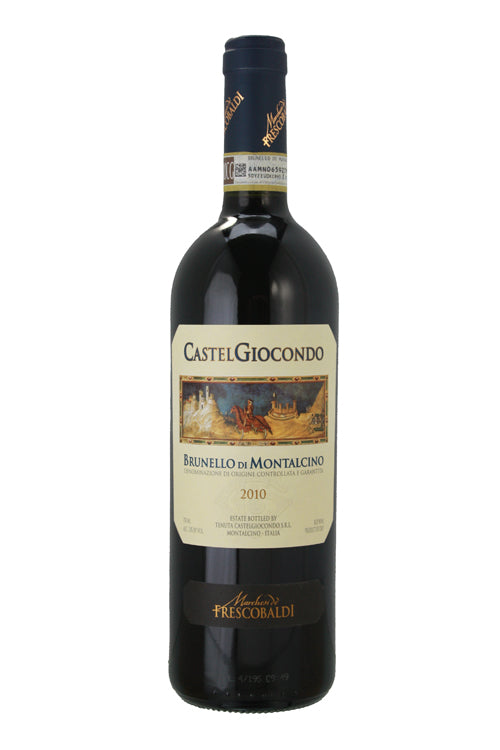1
/
of
1
Frescobaldi Castelgiocondo Brunello di Montalcino 2018
Frescobaldi Castelgiocondo Brunello di Montalcino 2018
Regular price
$74.99
Sale price
$74.99
Regular price
$82.99
Unit price
/
per
Elegant, with a vibrant structure shoring up cherry, raspberry, plum, earth and underbrush flavors. Turns compact on the finish, yet bright acidity and vestiges of the fruit keep this focused. Best from 2025 through 2040. 27,500 cases made, 3,000 cases imported. - Bruce Sanderson
91 points Decanter World Wine Awards
Violets and wet stone aromas with slight vanilla finish. Fine tannins that adds complexity and a long finish. Elegant wine.
Availability:
20 In Stock
$25 Shipping on Orders +$299
Couldn't load pickup availability
Share :

- varietal
- Region
- Type
- Reviews
Product Review
The 2010 Brunello di Montalcino ushers forth a new stylistic chapter in the wines of Marchesi de' Frescobaldi. Gone are those overt oak notes of cinnamon, dark chocolate and moist chewing tobacco. Instead, this fresh and streamlined wine renews its effort to put Sangiovese in prime positioning. The bouquet shows dark cherry, ginger and grilled herb. Instead of immediacy, this wine is engineered for longevity and that comes as a surprise considering that Castelgiocondo has historically been one of the biggest advocates of what is now dubbed "international" Brunello. With the 2010 vintage, this estate goes back to its traditional roots. The wine is young now and needs about five more years to complete its cellar evolution.
Tenuta di Castelgiocondo is the celebrated estate owned by Marchesi de' Frescobaldi. The Frescobaldi family makes two lines of wines from Montalcino. First is Castelgiocondo and second is the decidedly more glitzy and glamorous Luce executed in a very oak-forward, soft style. Frescobaldi g
Product Score
94
By far the most significant variety in central Italy, it is the main grape in 25 of Tunscay’s 42 DOCs and also the backbone to the region’s most highly acclaimed wines. It’s capacity to adapt and evolve according to its suroundings is partly why it has acquired so many clones and synonyms. In Chianti Classico it is often referred to as "Sangioveto", while in the towns of Montalcino and Montepulicano (not related to the variety grown in Abruzzo) it goes by "Brunello" and "Prugnolo Gentile" respectively. Other synonyms include "Morellino" in southern Maremma, and "Nielluccio" in Corsica. With this in mind it is no surprise there is such variety in styles, varying from light young wines like Chianti Classico all the way through to gloriously rich and powerful Brunellos that can benefit from decade or more bottle maturation. Sangioveses that see little to no oak, typically show bright, tart red fruit of cherries and redcurrants while olives, herbs, and meat juices are noted in more savory examples. The grape’s acidity makes it a good accompaniment to food which is also high in acidity. Tomato based dishes and a great variety of Italian cuisine can pair incredibly well.
Tuscany is practically synonymous with Italian wine. Red wine, principally made from Sangiovese, accounts for most of the region’s production. Whether it’s a light Chianti, bold Brunello di Montalcino, or fruit-forward Super Tuscan there is a wine for just about everyone. Other sub-regions within Tuscany include Maremma, Bolgheri, and Rosso di Montalcino.
Red wine is wine made from dark-coloured grape varieties. The color of red differs based on the grapes variety or varieties used.Interestingly, black grapes yield a juice that is greenish-white. The actual red color comes from anthocyan pigments (also called anthocyanins) from the skin of the grape (exceptions are the relatively uncommon teinturier varieties, which produce a red colored juice). Most of the production centers around the extraction of color and flavor from the grape skin.


